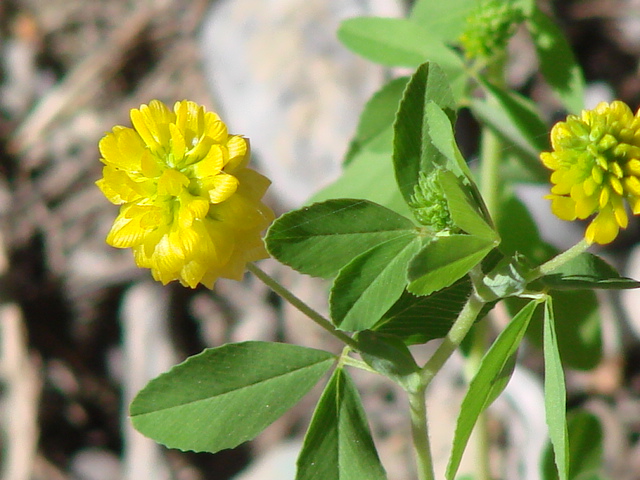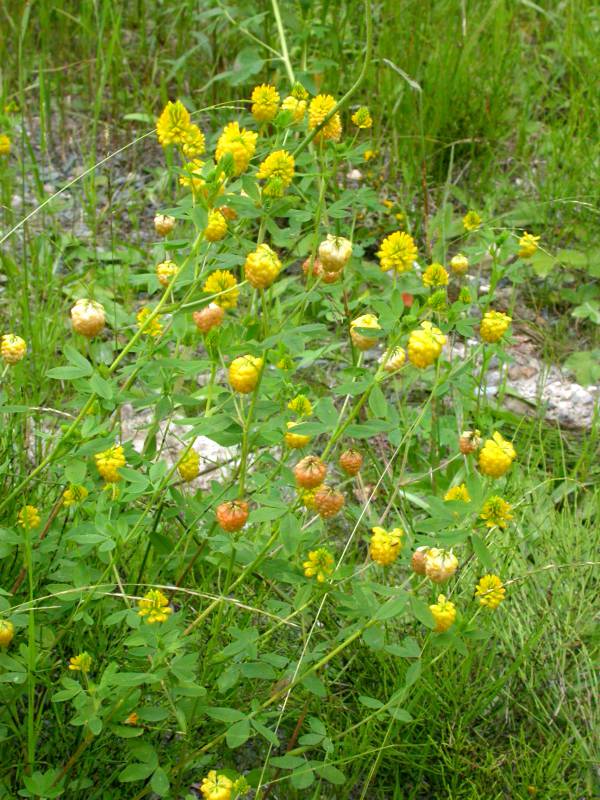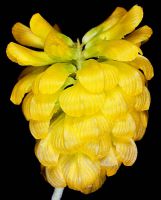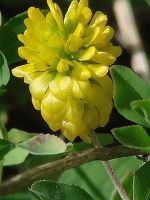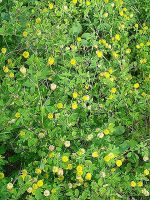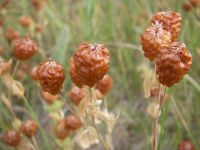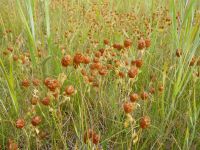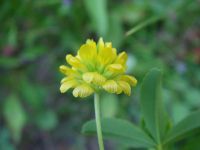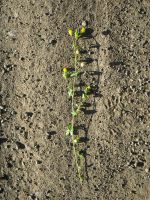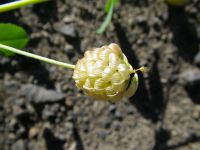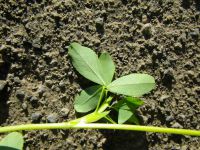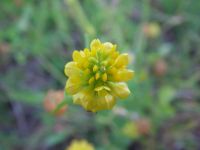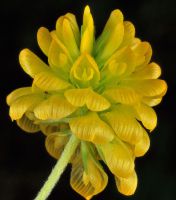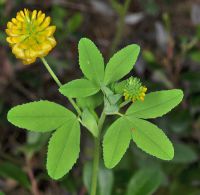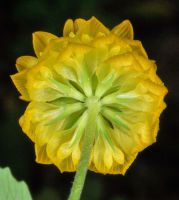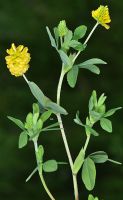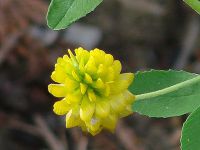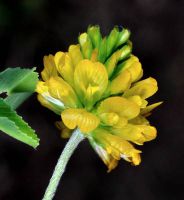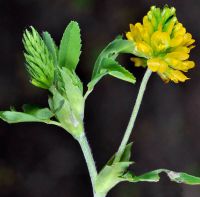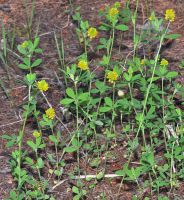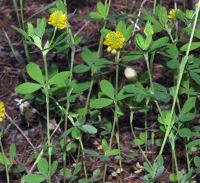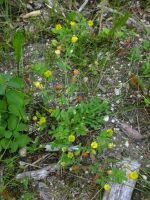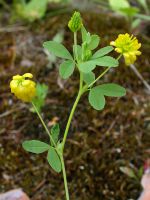Distribution: Occurring chiefly west of the Cascades crest in Washington; Alaska to California, east to Montana and Wyoming; also occurring in most of eastern North America.
Habitat: Roadsides, fields, lawns, railways, wastelots, and other disturbed open sites.
Flowers: June-September
Origin: Introduced
Growth Duration: Annual, Biennial
Conservation Status: Not of concern
Pollination: Bumblebees, bees, butterflies, flies
Pubescent to glabrous annual or biennial usually with several erect or ascending stems 2-5 dm. tall.
Leaves trifoliate, leaflets oblong-elliptic to oblanceolate, 1-3 cm. long, sub-sessile, serrulate 2/3 their length; stipules narrow, 10-18 mm. long, attached to the petiole over half their length, the free portion acuminate.
Inflorescence of 30- to 100-flowered heads, 10-16 mm. thick, on axillary peduncles longer than the leaves; flowers 5-7 mm. long, yellow, pea-like; calyx glabrous, half the length of the corolla, the upper 2 teeth about half as long as the lower 3, the latter slightly longer than the calyx tube; banner flared and spreading, much longer than the wings and keel.
Pod 1-seeded, equal to the attached style.
Publication: Hist. Pl. Palat. 2: 344 1777.
PNW Herbaria: Specimen records of Trifolium aureum in the Consortium of Pacific Northwest Herbaria database
WA Flora Checklist: Trifolium aureum checklist entry
OregonFlora: Trifolium aureum information
E-Flora BC: Trifolium aureum atlas page
CalPhotos: Trifolium aureum photos

